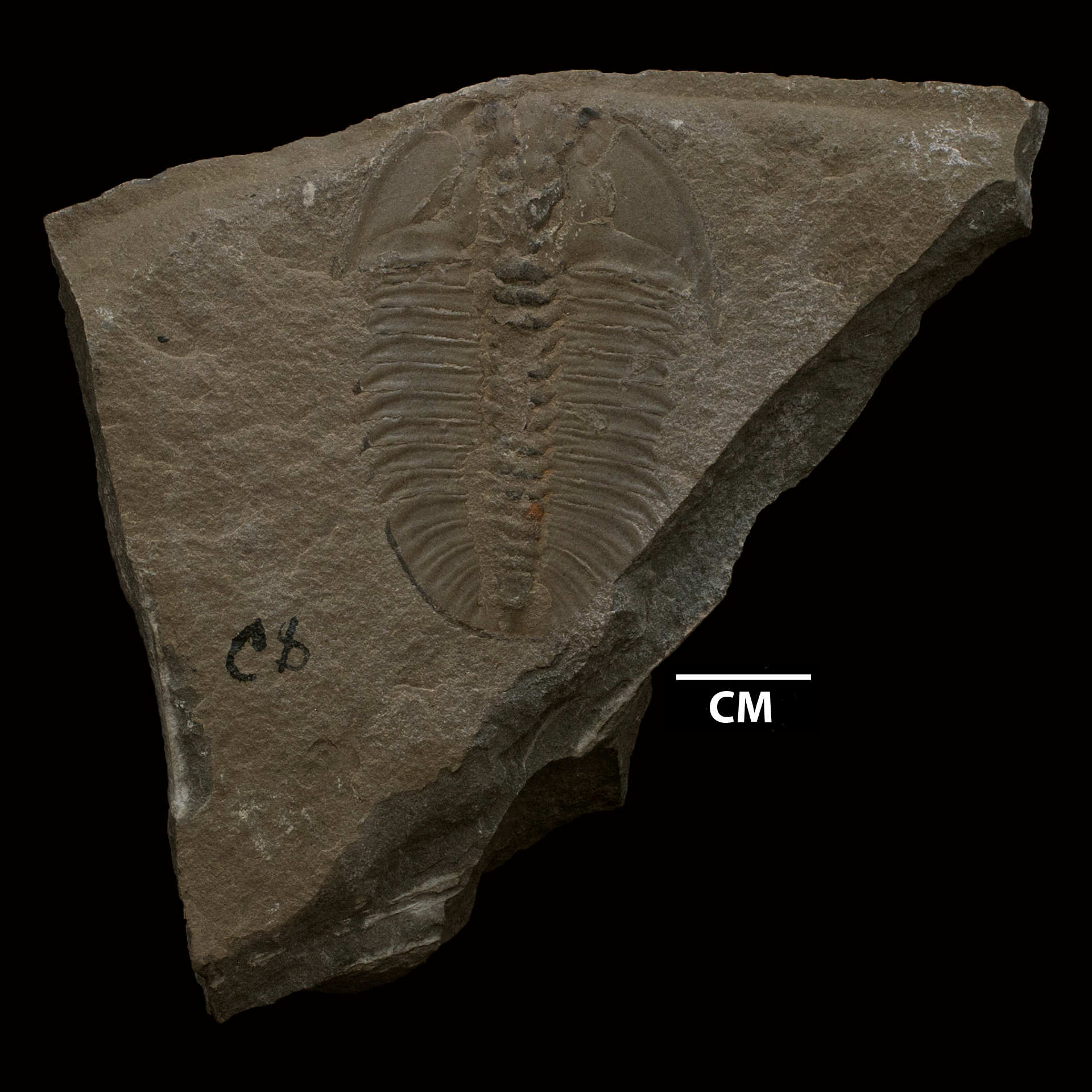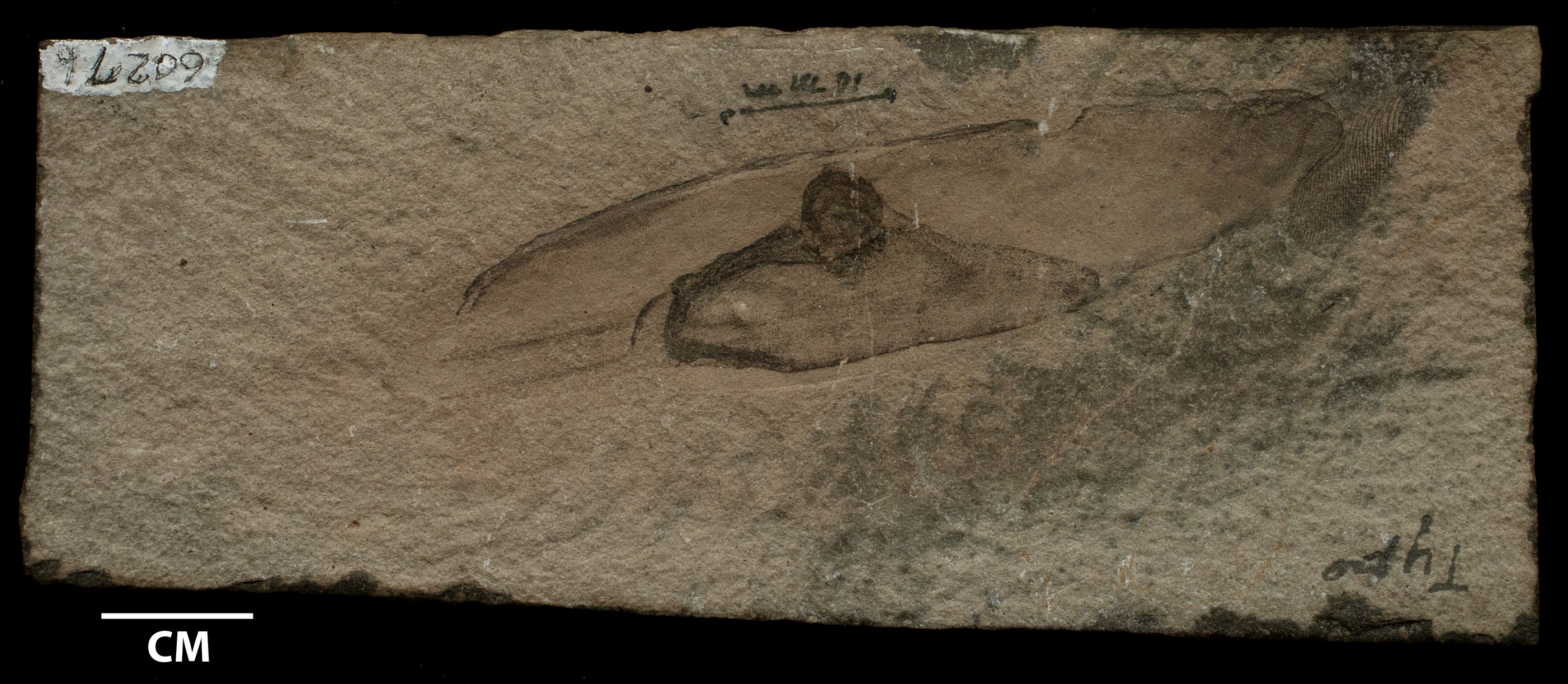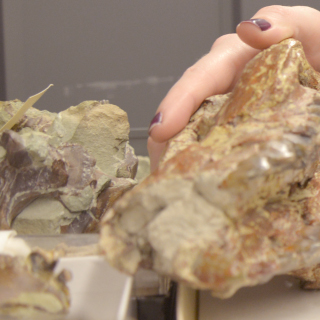Research Collections
Although UMPC specimens span across the globe, there are several suites that form the majority of the collection. These are currently or historically the most actively researched collection, as well as containing the largest amount of material.
Deiss Collection

(Cambrian)
The Deiss Collection consists mostly of trilobites and some brachiopods from Montana, Canada, and adjacent areas of the West. These specimens were collected by UM Professor Charles Deiss in the 1930s – 1940s. This collection also includes material donated to the collection by J. H. Bradley Jr. from the Burgess Shale of British Columbia, Canada.
Specimen: Ogygopsis sp., currently uncurated trilobite specimen from Mt. Stephen in British Columbia, Canada - collected in 1939, that is approximately 500 million years old.
Melton Collection
(Carboniferous)
The Bear Gulch fauna of the Melton Collection were deposited in central Montana and consists of invertebrates, including starfish, horseshoe crabs, decapods, as well as vertebrates - sharks, fish, coelacanths, and a conodont-eating animal. These fossils exhibit unusual soft-tissue preservation and represent one of the most diverse Carboniferous ecosystems in North America. William "Bill" Melton of the University of Montana starting collecting these specimens in 1968. This collection also contains a large donation of material from the University of Indiana in 2004.

Specimen: Typhloesus wellsi, UMPC 6027B, the enigmatic conodont-eating animal from the 320 million year old Bear Gulch Limestone.
Stanley – Silberling Collection
(Triassic)
The Stanley-Silberling Collection is an extensive collection of Triassic fossils acquired by Dr. George Stanley from central Europe, Japan, China, and the Cordilleran region of western North America, western Canada, and South America. It includes sponges, corals, brachiopods, echinoderms and giant reef clams. The collection also contains marine invertebrates from west-central Nevada that were donated by the late Norman Silberling of the U.S. Geological Survey. Some of these Upper Triassic fossils were collected in the 1930s by Siemon Muller of Stanford University.

Specimen: Distichophyllia norica, UMPC 14371, a 210 million year old coral from Nez Perce County, Idaho.
Fields Collection

(Cenozoic)
The vertebrate specimens of the Fields Collection are from western Montana and Idaho, representing one of the largest Oligo-Miocene Basin mammal collection in any museum. This collection contains various fossils of ancient North American rodents, horses, camels, rhinos, and elephants. The material was collected by Dr. Robert “Bob” W. Fields and students during his tenure at the UM from late 1950s to early 1980s.
Specimen: Merychyus arenarum, UMPC 4645, a ground dwelling herbivore known commonly as an oreodont from Lemhi County, Idaho that is 20-16 million years old.
Miller Botanical Collection

The Miller Botanical Collection contains specimens of Early Cretaceous and Cenozoic flora including well preserved pine cones and leafs from Montana and the North American East Coast. It was acquired by Charles N. Miller, Jr., formally of the Division of Biological Sciences.
Specimen: Conites sp., UMPC 913, a seed cone from the Kootenai Formation near Great Falls, MT which ranges from 100-146 million years ago.
